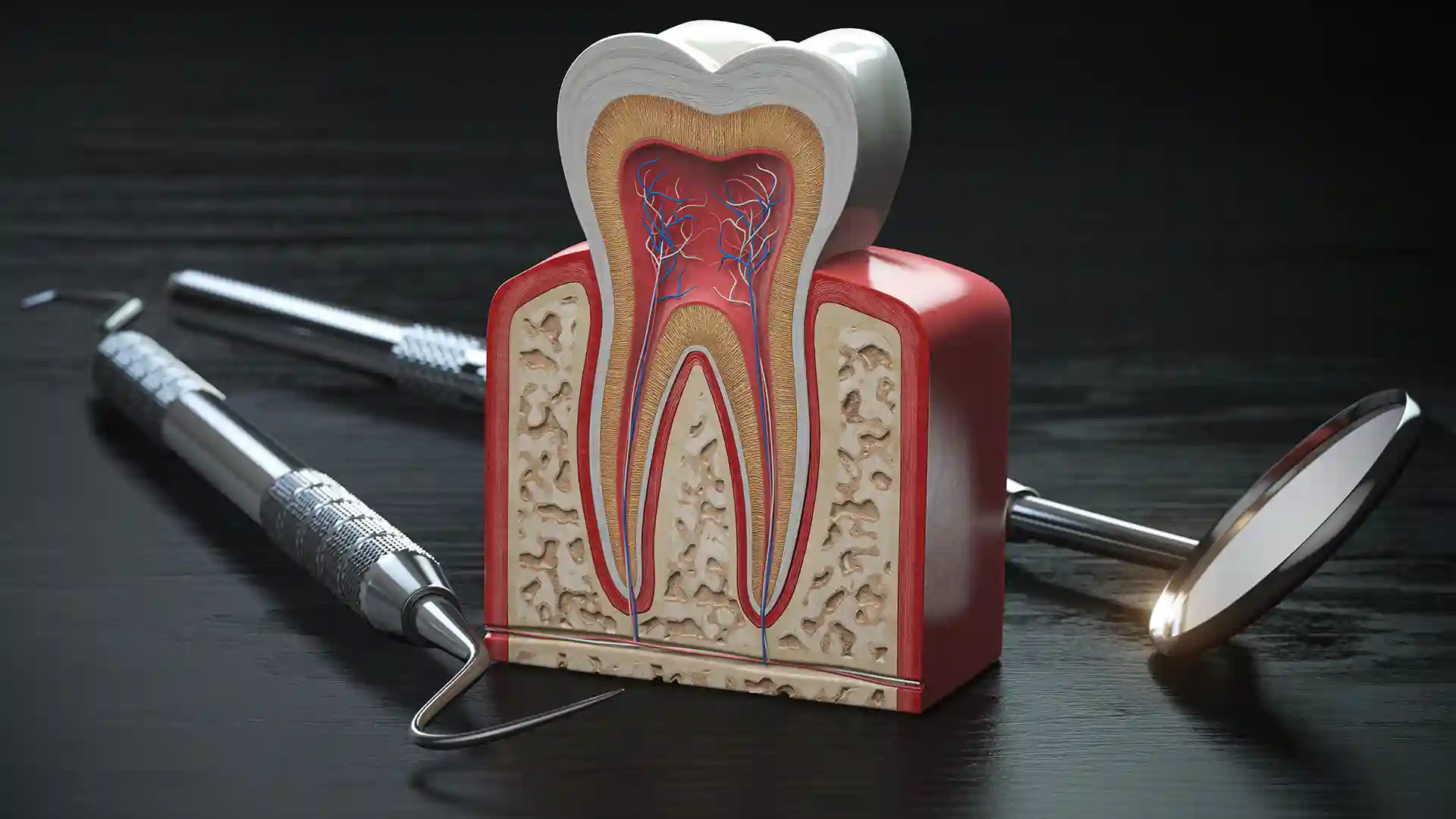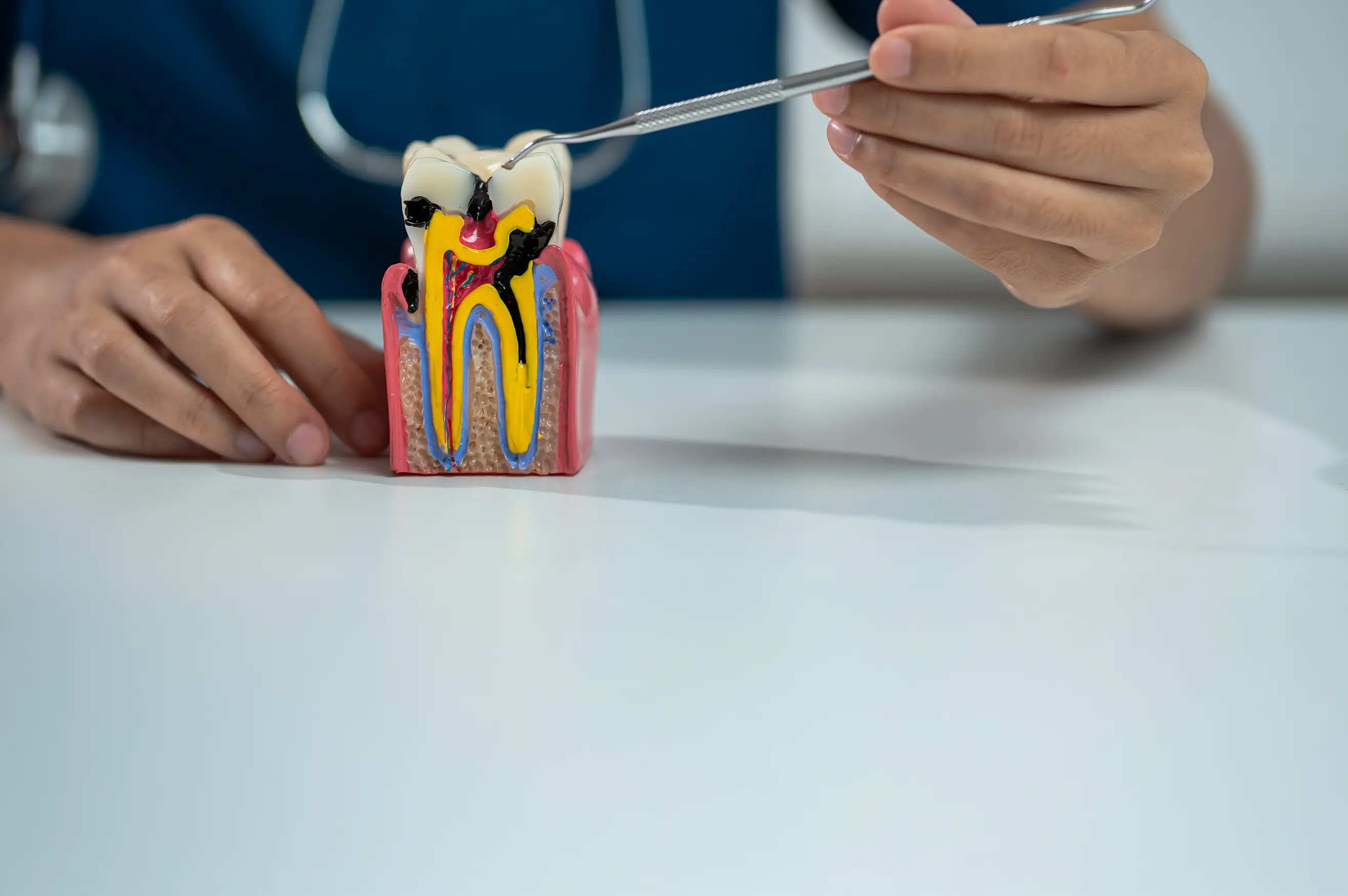Everything You Need to Know About Root Canal Treatment: Cost, Pain, Recovery & Prevention
Everything You Need to Know About Root Canal Treatment: Cost, Pain, Recovery & Prevention
Learn everything about root canal treatment — what it is, how it’s done, what to expect during and after the procedure, possible side effects, cost factors, and tips to prevent future dental issues. Find trusted specialists near you for expert care.
Table of contents:
- What Is a Root Canal and Why Do You Need One?
- What Exactly Is Done During a Root Canal Procedure?
- Is a Root Canal Painful? Here’s What to Expect
- How Long Does a Root Canal Take and What Happens After?
- Root Canal Treatment Side Effects and How to Manage Them
- How to Avoid Needing a Root Canal in the Future
- Root Canal Cost: What Affects the Price and What to Expect
What Is a Root Canal and Why Do You Need One?
A root canal ( or endodontic treatment) is a procedure used to treat and save a tooth that has become badly infected or damaged inside. Rather than extracting the tooth, the goal of root canal treatment is to remove the diseased or dying pulp inside the tooth, disinfect the internal canals, and then seal the space to prevent further infection.
What causes a root canal?
The dental pulp is the soft tissue inside a tooth that contains nerves, blood vessels, and connective tissues. When decay advances too far, a crack or trauma occurs, or previous dental work fails, bacteria can infiltrate that pulp. This invasion can cause inflammation, infection, or even pulp death.Over time, untreated infection can spread beyond the root tip into surrounding bone, forming an abscess.
Why do dentists push for a root canal?
Dentists recommend a root canal when the damage to the pulp is significant but the tooth can still be saved. The alternatives include extraction and replacement (e.g ., with an implant or bridge ). Root canal treatment allows patients to keep their natural tooth structure, maintain function, preserve bone, and avoid the costs or side effects of tooth replacement.
You might hear someone ask " why do dentists push for a root canal?" The answer is that this procedure is often the best way to relieve pain, eliminate infection, and preserve oral health without losing the tooth.
Read More: Best Dentist in Turkey: Your Guide to Top Dental dentists & Prices
Common root canal symptoms
Knowing the warning signs can help you seek treatment early. Common root canal symptoms include :
-
Persistent, throbbing tooth pain ( often radiating)
-
Heightened sensitivity to hot or cold, even after removal of stimulus
-
Pain when biting or applying pressure
-
Swelling or tenderness in gums around the affected tooth
-
Discoloration or darkening of the tooth
-
A pimple like bump ( gum boil) on the gums near the tooth
-
Swollen lymph nodes, facial swelling, or feeling generally unwell ( in advanced cases)
If you experience these symptoms, prompt dental evaluation is crucial to prevent the infection from worsening.

What Exactly Is Done During a Root Canal Procedure?
Now let’s walk through what exactly is done during a root canal— the steps your dentist or endodontist follows to restore your tooth.
Root canal treatment steps
-
Diagnosis and Imaging
The clinician begins with diagnostic tools: an examination, patient history, and radiographs (X -rays ). These help locate the infection, assess bone damage, and map out the internal root canal anatomy. -
Anesthesia and Isolation
Local anesthetic is used to numb the tooth and surrounding tissue. A rubber dam (small sheet ) is placed to isolate the tooth from saliva and keep the field dry and clean. -
Access Opening
A small opening is made through the crown top) of the tooth, granting access to the pulp chamber and canal system. -
Removal of Infected Tissue
The diseased pulp and any debris are removed with fine endodontic instruments. The clinician cleans out all canals thoroughly. -
Disinfection and Irrigation
The canals are flushed with antibacterial irrigating solutions to eliminate bacteria and debris. At times, medication may be placed inside the canals ( especially if the infection is severe) to reduce bacteria before final filling. -
Shaping and Drying
The canals are shaped carefully to receive filling material, and then dried. -
Filling (Obturating)
A biocompatible material —usually gutta-percha (a rubbery material)— is inserted into the cleaned canals along with a sealer to fill and seal the space. This step prevents reinfection. -
Temporary Restoration
A temporary filling is placed in the access opening to protect the tooth until the final restoration. You may be asked to avoid chewing on that side until permanent work is done. -
Final Restoration
In a subsequent appointment, the tooth is restored permanently. Because root-canal treated teeth are often more fragile, a crown ( cap) is usually placed to reinforce and protect the tooth long-term.
Occasionally, particularly complex teeth may require additional visits or even surgical approaches ( such as apicoectomy) if standard treatment fails.
Many informational sites include root canal photos ( illustrations or actual clinical images) to help patients understand what happens inside the tooth during the process.
Read More: Tooth Replacement After Extraction: Best Options, Costs in Turkey & Healing Tips
Is a Root Canal Painful? Here’s What to Expect
One of the top concerns patients have is “ is root canal painful?” Let’s address that clearly, backed by evidence and clinical experience.
Today, with current anesthetic techniques, most patients feel little to no pain during the root canal procedure itself. Modern local anesthesia, along with careful technique, dramatically reduce discomfort.In fact, many clinicians argue that the pain of an untreated infection is far more severe than the procedure itself.
That said, you may experience root canal symptoms like mild sensitivity or soreness in the days following the procedure. This is a normal part of the healing process.
Post-treatment discomfort is typically manageable with over-the-counter analgesics (e .g ., ibuprofen, acetaminophen ). Your dentist may also prescribe antibiotics if there was significant infection or swelling. If pain persists beyond several days or worsens, contact your dentist.
So in summary : the procedure itself is generally not painful, and post-procedure soreness is usually minor and temporary.
How Long Does a Root Canal Take and What Happens After?
Let’s talk time — how long does a root canal take, and what’s involved in root canal recovery ?
In straightforward cases, many root canal treatments are completed in one visit, often taking about 90 minutes. But if the tooth has multiple canals, infection, or anatomical complexities, additional sessions may be needed.
What happens during recovery?
-
First 24– 48 hours : The treated tooth may feel tender or slightly sore, particularly when chewing. This is normal.
-
Days 2 –7: Sensitivity or discomfort diminishes. You may be asked to avoid hard, crunchy foods on that side until the crown is placed.
-
Crown placement : At a follow-up visit, your permanent crown will be placed, restoring full strength and function.
-
Long term : With good oral hygiene and regular checkups, a root canal–treated tooth can last many years —often a lifetime.
Patients may wonder how long do you take to recover from a root canal. Most are fully comfortable within a week, though minor sensitivity may linger slightly longer.
Root Canal Treatment Side Effects and How to Manage Them
Even though root canal is a well established and safe procedure, there are some root canal treatment side effects to be aware of. Knowing how to manage them will help your recovery go smoothly.
Common side effects
-
Mild soreness or tenderness : Usually resolves in a few days.
-
Swelling or irritation : Some tissue swelling around the treated area is normal initially.
-
Temporary sensitivity : Adjacent teeth may feel sensitive while your mouth adjusts.
-
Breakage or fractures : Because a root-canal treated tooth is no longer vital (its nerve is removed ), the tooth structure can be more brittle, especially if not adequately protected by a crown.
-
Persistent or recurrent infection : In rare cases, bacteria may persist or re-enter the canal system, requiring retreatment or surgical intervention.
How to manage side effects
-
Use recommended over-the-counter pain relief ( ibuprofen, acetaminophen) as directed.
-
Apply cold compresses externally if swelling is present ( brief intervals).
-
Eat soft foods and avoid chewing on the treated side until fully restored.
-
Maintain excellent oral hygiene —brushing gently and flossing —so that the restoration area stays clean.
-
Attend all scheduled follow-ups and report any worsening pain, swelling, or persistent discomfort to your dentist.
These steps support your root canal recovery, minimize complications, and help protect the longevity of your restoration.

How to Avoid Needing a Root Canal in the Future?
Prevention is always the best strategy. Here are evidence-based suggestions on how to avoid root canal outcomes and minimize risk.
Address decay early
Dental cavities (caries ) that are left untreated eventually progress inward toward the pulp. Regular checkups and timely fillings stop that progression.
Maintain excellent oral hygiene
Daily brushing ( twice) and flossing help control bacterial buildup and prevent infections that could reach the pulp. Regular professional cleanings and examinations are also key.
Protect against trauma
Teeth that crack or chip are vulnerable to bacteria entering the pulp. Wear mouthguards during sports or risky activities and avoid chewing on hard objects.
Monitor symptoms early
If you detect root canal symptoms —sensitivity, pain, swelling —don’t delay. Early intervention often prevents full pulp decline and the need for a root canal.
Sealants and preventive measures
In high-risk populations or vulnerable teeth, dental sealants or protective materials may reduce the risk of decay penetrating deep.
While not every root canal can be prevented (e .g., from sudden trauma ), following these steps helps greatly reduce your chance of needing one.
Root Canal Cost: What Affects the Price and What to Expect
Cost is an important factor for many patients, so here’s a breakdown of root canal cost, factors influencing it, and what you might expect.
How much is a root canal?
The price of root canal treatment varies significantly depending on factors like tooth location (front tooth vs molar ), the complexity of root anatomy, presence of infection, clinician experience, and geographic region or clinic.
-
In the UK under the NHS, root canal work falls under Band 2 treatment, which currently costs about £ 75.30 in England.
-
Privately, root canals might cost anywhere from £ 300 to £950 (or more ), depending on complexity and location.
Elsewhere (e .g., in the U.S. or other countrie s), costs may be higher. Always request a detailed quote that includes diagnostics, materials, follow up care, and restoration ( crown) costs.
Factors that influence cost
-
Tooth type & anatomy : Molars with multiple or curved canals are more challenging and cost more.
-
Extent of infection : Severe infections require more cleaning and possible multiple visits.
-
Materials and technology: Use of advanced imaging (e .g., 3D scans ), microscopes, or high-end materials raises cost.
-
Clinician type : Endodontists ( specialists) often charge more than general dentists due to specialization and expertise.
-
Location & overhead: Urban clinics or high cost areas generally charge more.
By understanding how much do root canals cost in your area, you can make a more informed decision about where to receive treatment and what to expect financially !
Sources:
Fill it out to get your free consultation
Innovation & Precision In Every Implant
We use only reputable, high-quality implants designed for long-term durability
BioTec Dental Implants


Hiossen Dental Implants


Straumann Dental Implants


Nobel Biocare Dental Implants


MegaGen Dental Implants








